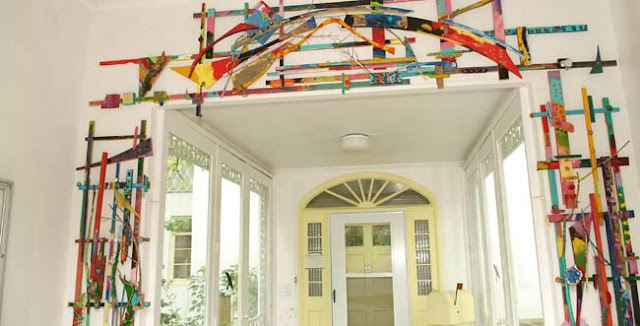Art workplace designs are on my mind these days. I'm not hard to please. Mary Blair (above) has the essentials in this photo: adequate light and a big table to spread out on. I do wonder though, if there's some scheme that would work even better. Doing the blog about kids classrooms as adult work spaces made me wonder if there are other templates out there that might be worth trying.
Of course, if you convert your kitchen to a studio where are you going to cook? Hmmmm.
Well, how about drugstore counters? Make your basement look like a drugstore. An artist with lots of books could could work at a drugstore-type counter/desk with his books and supplies on shelves behind him.
Or diners...the ones made from old railroad cars. Each booth could be a separate desk containing a separate project. When you get tired of working on one thing you sit down at another desk and pick up what you were working on there.
Or what about those big circular cash and wrap desks (above) that you see in stores like The Pottery Barn and Crate & Barrel. Geez, they take up a lot of space, though. They're probably pricey, too.
I like the shelves you see in some stores. These shelves have concealed spotlights underneath, which use Hollywood-type lighting to show off what the store's selling. If I had a shelf like that at home I'd stack it with art supplies and works in progress. The idea would be to sell myself on my own artwork by displaying it to myself with maximum advantage. An artist needs to have confidence that what he's done will appeal to people. Maybe you have to sell what you do to yourself before you can confidently sell it to others.




















































